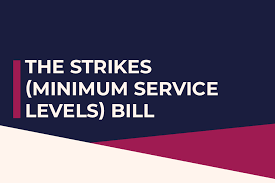Layoffs and Workers' Legal Rights Under the WARN Act under Employment Law
Certainly! Here’s a focused summary of Layoffs and Workers' Legal Rights Under the WARN Act under Employment Law:
Layoffs and Workers' Legal Rights Under the WARN Act
What is the WARN Act?
The WARN Act (Worker Adjustment and Retraining Notification Act) is a U.S. federal law enacted in 1988 to protect workers and their families by requiring employers to provide advance notice of large-scale layoffs or plant closings.
1. Purpose of the WARN Act
To give employees time to prepare for job loss.
To allow them to seek new employment or training.
To enable state and local agencies to offer retraining and transition services.
2. Who Is Covered by the WARN Act?
Employers:
Applies to businesses with 100 or more full-time employees, or
100+ employees who work a combined 4,000+ hours per week.
Employees Covered:
Full-time workers.
Part-time workers may be included depending on total hours worked.
Excludes temporary workers and some government employees.
3. When is WARN Notice Required?
The WARN Act requires employers to provide at least 60 calendar days’ notice before:
Plant Closures: Permanent or temporary shutdown of a facility or operating unit affecting 50 or more full-time employees.
Mass Layoffs: Reduction of workforce that affects either:
500 or more employees, or
50–499 employees if they make up at least 33% of the workforce.
4. Legal Requirements for Notice
Who must be notified:
Affected employees (or their representatives, e.g., unions)
State dislocated worker unit
Local government (chief elected official)
Notice content must include:
Reason for layoff or closure
Expected date(s) of layoff
Information on job titles and number of affected workers
Contact information for further questions
5. Exceptions to the WARN Notice Requirement
Faltering company: Actively seeking capital or business that would avoid closure.
Unforeseeable business circumstances: Sudden, dramatic events (e.g., pandemic, economic collapse).
Natural disasters: Layoffs caused by events like hurricanes or earthquakes.
In these cases, notice must still be given as soon as possible.
6. Penalties for Non-Compliance
Employers who violate WARN may be liable for:
Back pay and benefits for each affected employee for up to 60 days.
Civil penalties of up to $500 per day for failure to notify local government.
Legal action may be brought by employees, unions, or local governments.
7. State "Mini-WARN" Laws
Many states have their own WARN-like statutes that may:
Apply to smaller employers
Require longer notice periods
Impose additional obligations
Examples include California, New York, New Jersey, and Illinois.
Summary
The WARN Act ensures that workers receive advance notice of significant layoffs or closures, helping them transition more smoothly. Employers must understand and comply with these rules to avoid costly penalties and protect worker rights.









0 comments